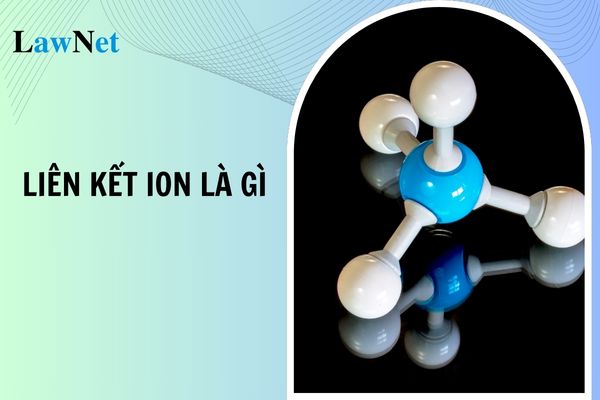What is an ionic bond? What is the nature of ionic bonding? What is the content structure of grade 10 Chemistry in Vietnam?
What is an ionic bond? What is the nature of ionic bonding?
An ionic bond is a type of chemical bond formed when one atom transfers an electron to another atom. The result of this process is two oppositely charged ions attracting each other, forming an ionic compound.
Examples:
- Sodium chloride (NaCl): In the compound NaCl, the sodium atom (Na) loses an electron to become the Na⁺ ion, and the chlorine atom (Cl) gains an electron to become the Cl⁻ ion. These two ions attract each other and form an ionic bond in the structure of table salt.
- Magnesium oxide (MgO): The magnesium atom (Mg) loses two electrons to become the Mg²⁺ ion, and the oxygen atom (O) gains two electrons to become the O²⁻ ion. The ionic bond between Mg²⁺ and O²⁻ forms the MgO compound.
The nature of an ionic bond is the electrostatic attraction between oppositely charged ions. When a metal atom loses an electron and becomes a positive ion (cation), and a non-metal atom gains an electron and becomes a negative ion (anion), these ions attract each other through electrostatic forces. This is a very strong force, holding the ions together in an ionic crystal lattice.
This electrostatic attraction is due to the difference in electrical charge between the positive and negative ions. The positive charge of the cation and the negative charge of the anion create a powerful attraction that maintains the stable structure of the ionic compound. Due to this strong electrostatic attraction, ionic compounds typically have high melting and boiling points, as well as being hard and brittle.
The working mechanism of an ionic bond is as follows:
- Electron transfer: A metal atom (usually elements in groups 1 and 2 of the periodic table) will lose one or more electrons to become a positive ion (cation). Conversely, a non-metal atom (usually elements in groups 16 and 17) will gain electrons to become a negative ion (anion).
- Electrostatic attraction: These positive and negative ions will then attract each other through strong electrostatic forces, forming an ionic compound.
Ionic bonds typically occur between atoms with a large difference in electronegativity, making electron transfer more feasible. Ionic compounds generally have high melting and boiling points, are soluble in water, and conduct electricity when in solution or molten state.
Note: Content is for reference only!

What is an ionic bond? What is the nature of ionic bonding? What is the content structure of grade 10 Chemistry in Vietnam? (Image from the Internet)
What is the content structure of grade 10 Chemistry in Vietnam?
According to the General Education Program for Chemistry issued along with Circular 32/2018/TT-BGDDT, the contents of the Chemistry curriculum for Grade 10 are regulated as follows:
| Content Area | Grade 10 |
| Basic Chemistry Knowledge | |
| Atomic Structure | x |
| Periodic Table of Elements | x |
| Chemical Bonds | x |
| Chemical Energy | x |
| Rate of Chemical Reactions | x |
| Oxidation-Reduction Reactions | x |
| Inorganic Chemistry | |
| Group VIIA Elements | x |
| Study Topics | x |
What does the teaching equipment for grade 10 Chemistry in Vietnam include?
According to the General Education Program for Chemistry issued along with Circular 32/2018/TT-BGDDT, the Chemistry teaching equipment for Grade 10 includes:
1. Equipment for demonstration and experiments
- The periodic table of chemical elements; solubility chart of salts and hydroxides; electron configuration chart of metals/transition metal ions in the first series; color chart of some transition metal compounds.
- Pictures introducing the geometry of some coordination compounds, Cu²⁺ salts in water solvent; structure of some biological coordination compounds heme B, chlorophyll, vitamin B12, and used in medicine such as cisplatin, carboplatin,...; 3R symbol; aluminum recycling; silicate industry; cement production, ceramic industry, both industrial and handicraft. Diagrams of distillation, refining, and application of petroleum. Images of the application of alkane, alkene, alkadiene, arene in practice; application of halogen derivatives; alcohol and phenol in practice; role of amino acids, role of glucose, starch in life.
- Model/set of molecular assemblies in hollow and solid forms of some alkanes; benzene, halogen derivatives, ethylic alcohol (ethanol) and phenol; amines, amino acids, peptides, and proteins.
- Electronic learning materials:
+ Software: software for calculations; virtual experiment software.
+ Videos of some harmful, dangerous explosive experiments, complex experiments,... such as experiments with chlorine, bromine,... alkali metals, alkaline earth metals interacting with water,...
2. Equipment for practice
- Analytical tools, measuring instruments: set of tools for electrolysis of copper (II) sulfate and sodium chloride solutions; tools for testing conductivity; handheld pH meters;...
- Sufficient equipment, tools, and chemicals as per the minimum teaching equipment list issued by the Ministry of Education and Training.

